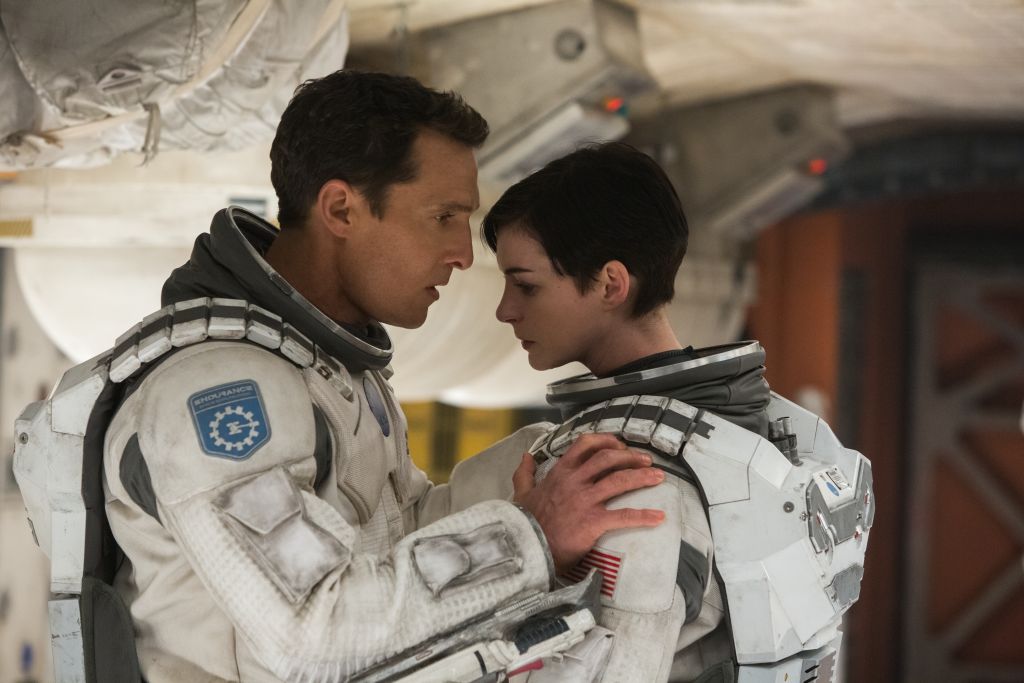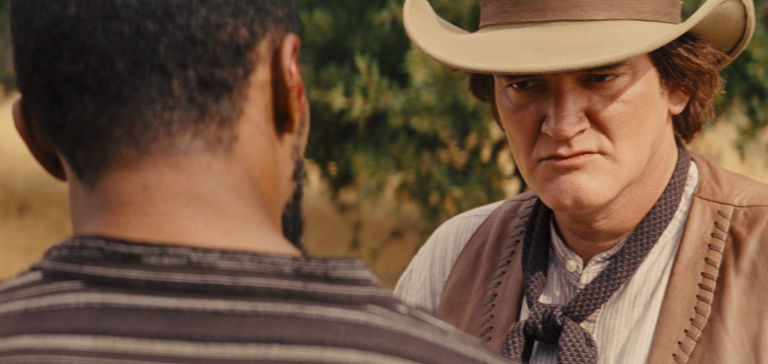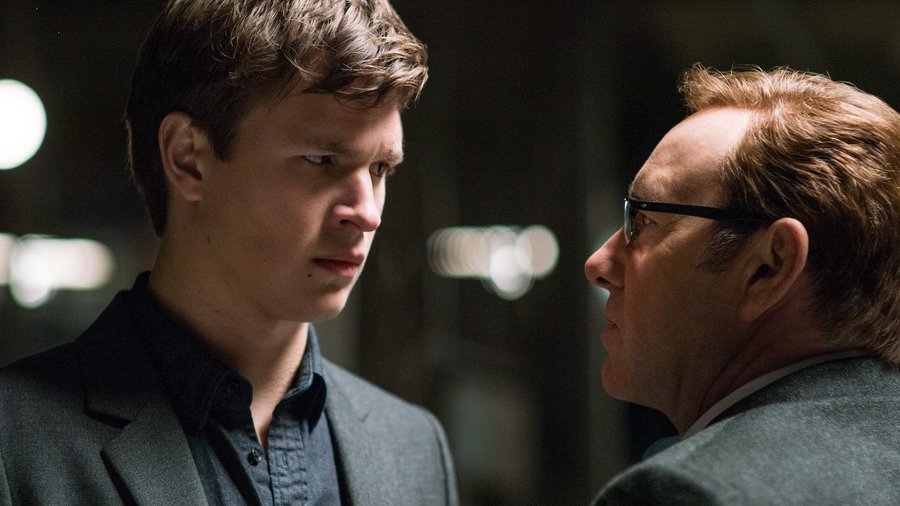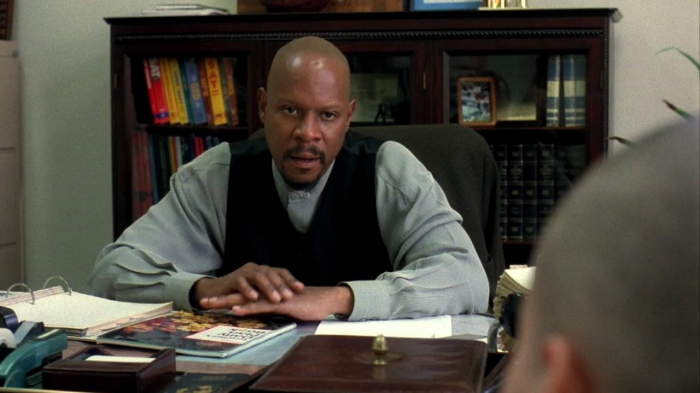5. Interstellar – The Power of Love

On the subject on exposition, Nolan is probably the guiltiest filmmaker of them all. Though Inception was perhaps the most culpable, the exposition then was warranted considering how much worldbuilding was necessary to establish the complex mechanics of the whole idea of dream heists. Interstellar’s worldbuilding on the other hand, was exceptionally done, with Nolan capturing the wonders of well, interstellar space travel like no other, with amazing visual and practical effects to complement the grandiose nature of the story.
The terrible scene in the film is an obvious one, the scene where Anne Hathaway’s character monologues about the idea of love and how such a simple, human concept transcends the very fabric of time and space. Granted, this scene is alleviated to much greater heights with Hathaway’s performance, it’s very much in the same vein as Psycho’s Psychiatric Evaluation in the sense that it provides otherwise unnecessary exposition.
However, unlike Psycho, this scene does unfortunately, play a big role in the story, giving a simplistic and unsatisfactory answer to the many questions the film raises. The concept of love literally eclipsing the cosmos in such a way that introduces a new dimension is utterly ridiculous, and this concept is made even worse if you consider the fact that Hathaway’s character essentially has a clear understanding of the situation, as clear as Psycho’s psychiatrist, in order to deliver such a heavy handed speech.
4. Silence – God Voiceover

Yet another Scorsese film, Silence was a project that garnered much hype among audiences. A passion project by one of modern cinema’s greatest directors over 25 years in the making, with a trailer that’s undeniably fantastic with a brilliant concept behind it, it was unusually tragic how Silence bombed at the box office, making only half its budget, considering the fact that, though slow paced, the film was an amazing experience which offers a mature outlook on the whole idea of religion.
The climax of Silence has Andrew Garfield’s character, a devout Jesuit priest in pursuit of his mentor, unable to come to the fact that he apostatized, apostatize himself. The scene is unbelievably powerful, in terms of content, with the whole idea of a man of God committing such a sacrilegious act, and the fact that audiences, having went through the whole ordeal together with the character, we come to feel his pain, we empathize with his gradual decision and acceptance, resulting in something profound and memorable.
That is, until we hear “God” speak, telling the priest that his decision to step on the image of Christ is “alright”, not only does this add unnecessary elements to the story, but it ruins the beauty of the scene with something is arguably comical.
It’s a shame how the scene as a whole, unlike the other scenes on this list, is in fact, great. But due to a single element, the entire scene, and to an extent, the entire film for that matter, is ruined.
3. Django Unchained – Quentin Tarantino’s Cameo

When it comes to crafting an entertaining and undeniably great story in the world of cinema, Quentin Tarantino is one of the first names that gets thrown around. With films like Kill Bill, Pulp Fiction and Inglourious Basterds in his repertoire, Django Unchained, the film that immediately followed the fantastic Basterds, didn’t fail to disappoint. The film paints a story of the titular Django, in his journey from becoming a slave, to a free man, to revenge. Like most of his other work, Django Unchained is endlessly rewatchable, with non-stop action and excitement filling the near 3-hour runtime. Well, except for the third act.
The entire sequence at Candieland involved the dramatic deaths of Calvin Candie, a fantastic antagonist portrayed brilliantly by Leonardo DiCaprio and also the film’s deuteragonist Dr King Schultz, the driving force behind Django, a brilliant role which netted Christoph Waltz his second Oscar. That episode ended with a bloodbath which ultimately resulted in Django’s imprisonment and subsequent escape.
Though the last half an hour of the film immediately preceding Django’s final foray into Candieland is debatably unnecessary, considering the severe change in tone, a break in the high the film led audiences on, the scene that isn’t debatably bad but rather undoubtedly so is Tarantino’s cameo.
Though that scene isn’t particularly poorly written, it is in the context of the film in terms of how detracting it is from the main plotline. Most importantly, Tarantino ruined this scene, not with writing, not with his direction (at least not behind the camera), but with his absolutely abysmal acting, with a ridiculous accent which somehow manages to be the most racist thing in a film revolving around slavery.
In all honesty, his performance makes the entire scene feel like one big shoehorn for his cameo. Which is why this scene ranks so highly on the list, it’s a scene that provides a needlessly drawn out intermission to an adrenaline rush, and it’s more infuriating considering the palpable intent behind the scene.
2. Baby Driver – Doc agreeing to help Baby

The most recent inclusion on the list, Edgar Wright’s Baby Driver was met with universal critical acclaim, with critics and audiences alike praising Wright’s vision and the jaw-dropping fact that filmmakers meticulously synced almost every single action scene to a fast-paced soundtrack, right down to every bullet, door slam and movement, essentially making the entire film an insanely choreographed action musical.
Though amazing on a technical level, Baby Driver’s story is very unlike Edgar Wright, it feels painfully mediocre when put next to his earlier works such as Hot Fuzz and Shaun of the Dead, both of which provide comedy that’s not only hilarious on face value, but if one were to truly delve into the mechanics of the story, one would find humour in possibly every line.
The humour in Baby Driver is for the most part, very surface level. However, despite the story’s mediocrity, if one were to perceive it as a complement to the action and not the other way around, it still does its job competently. That is, aside from one scene towards the end.
The scene occurs, once again, during the climax, where film’s protagonist, Baby is on the run together with his lover, evading both the film’s antagonist and the police. He then decides to pay a visit to his old boss (also set-up to be one of the secondary antagonists of the film) to reclaim something he took from Baby earlier on in the film.
The minor confrontation between the two characters is then interrupted with Baby’s love interest sudden entrance into the scene, to which Baby’s boss reacts by immediately letting Baby off, forgiving him for Baby’s prior betrayal, even going the extent not only to help Baby, but to sacrifice his life for Baby, all because he was “in love once”. One would assume this scene description to be something out of a crappy direct-to-DVD film, and not an Edgar Wright film of all people. It’s utterly ridiculous, and also puzzling considering Wright’s amazing track record and flair for writing in general.
The scene itself is also not at all self-aware of its own ridiculousness, though Wright’s earlier works do include undeniably cheesy moments, those scenes are automatically forgiven due to the character’s self-awareness of the situation. This scene however, had no such moments, the characters don’t even share a simple puzzling glance, they just accept the situation for what it is. The same acceptance can’t be said for us audiences.
1. American History X – Every scene with Sweeney

Though this list calls for great movies ruined by a SINGLE scene, the top spot on this list is taken by a movie that’s unbelievably fantastic, raising many thought-provoking ideas, as well as featuring career defining performances.
More importantly, it’s taken by a movie that’s ruined not just by one scene, but by multiple. This film is American History X, a powerful examination to the idea of intolerance, influence, family, with complex and intricate characters with such distinct and interesting personalities and character arcs making the entire film a must-watch. For the most part.
The film includes one character, a two-dimensioned excuse of a role, whose only sole purpose is to deliver exposition. Think the terrible psychiatric evaluation in Psycho, the insulting break in flow of Django Unchained, but imagine that for multiple scenes. Welcome to Principal Dr. Bob Sweeney. The complex, innate character motivations behind almost every powrerful moment in the film HAS to be deconstructed by this character, delivering lines that pale in comparison to not only the rest of the film, but any decent film in general.
It’s a shame considering the filmmaker’s intentions behind such scenes, aiming for a balance between profoundness and audience understanding, resulting in an awkward blend of the two that is ultimately nothing but cheesy. Such a mistake could have been forgiven should it happen once, but the fact of the matter is the sheer amount of scenes Sweeney has in the film and the weight his character has in relation to the main plotline.
Author Bio: Zach Wee is a film student from Singapore. Apart from being an aspiring filmmakerr, Zach has a strong passion for cinema and manages the website of his school’s film club, where he edits and also submits weekly film reviews.